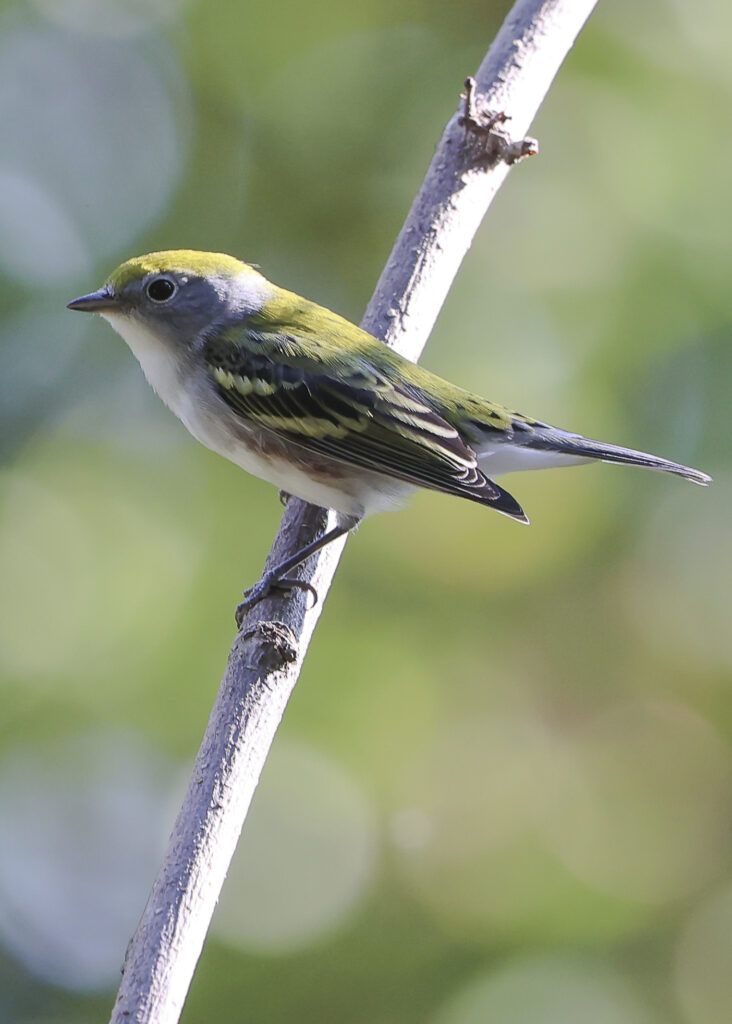Autumn’s Arrival Signals Migration, Molt


By Wayne Bierbaum
Last week, while I was walking on the edge of the Patuxent River, a flash of bright yellow caught my eye. A bird with bright yellow cheeks flitted from one side of the trail to another, only holding still for about two seconds. The ball of nervous energy was a hooded warbler.
The hooded warblers are small birds with a greenish-brown back, yellow chest, and bright yellow cheeks that contrast with markings that resemble a black hood. They are striking looking.
Near the hooded warbler was a pine warbler, bobbing his tail. It was a dull yellowish-gray color with darker streaks on its chest. It was pale compared to the springtime pine warblers that fly through.
The fall bird migration began several weeks ago. Early migrators like the bright blue cerulean warbler or the extremely yellow prothonotary warbler have left Maryland for warmer climates. In September and into early November, other kinds of warblers, sparrows, tanagers, orioles, and more will pass through our area on the way south.
Many birds in the fall are no longer the loudly singing, colorful feathered beauties they were in the spring. Twice a year most birds will molt to exchange worn feathers for new stronger ones. It is common in the fall molt that bright spring feathers are exchanged for drab winter ones. The drab fall feathers allow many warbler species to blend into the underbrush, but it also makes it very hard to tell species apart.
With the pine warbler that I saw near the Patuxent, I initially thought that I was looking at an uncommon migrant, the Cape May warbler, but the wagging tail gave away the real species. When I can’t immediately ID a bird, I will go to my photos and do some research in a bird book.
One bird that exchanges a flashy set of spring feathers for some flashy fall feathers is the chestnut-sided warbler. This warbler changes from having a small patch of greenish-yellow on its head to having a greenish-yellow from its head to its tail and a red swish on its side.
To look for fall migrating birds, I will frequently make the short trip to Terrapin Nature Park on Kent Island. They fly through at night but tend to pause and refuel before crossing large bodies of water. That is why Terrapin Park and Cape May are good areas to look for migrating birds.
Cape May has an advantage for bird watchers. Because of the funneling effect of the gradually narrowing land plus the ocean and bay barriers, hawks, falcons, and eagles (raptors) are commonly seen in great numbers, frequently close to the ground. Wind currents tend to push birds to the east and they then follow the coast south, ending up at the southern tip of New Jersey. Cape May is a designated hawk watch station where migration data is collected. It is fun to watch the peregrine falcons zoom through the air at incredible speeds or see a kestrel catch and eat a dragonfly without landing.
Mountains are also a road map for migrating raptors. The up-drafting air currents make the raptor’s long-distance flights easier. There are several spots in western Maryland that, because of clear views, are also designated as hawk watching areas. There is even a hawk watch site at Elk Neck State Park.
Even though spring migration is usually more colorful, go out and see if you can find a bird that you find to be special, like the hooded warbler or bay-breasted warbler.
